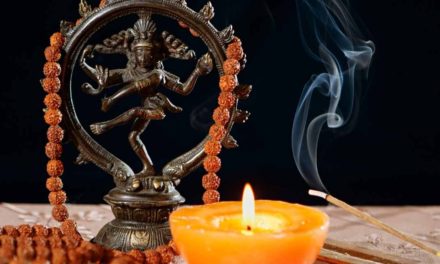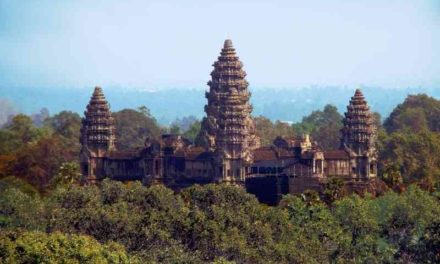Sanatana Dharma owes much to the theory of Samkhya (Sankhya), or the Darshana Samkhya. Samkhya reflects the total. The philosophy of Samkhya deals with the number of realities that exist.
It has exercised immense impact on many scholars in ancient India, China, and, according to others, even Greece. Until now, it draws many thinkers’ interest while it is not a working ideology and has no committed adherents.
In scriptures including the Bhagavadgita, the Mahabharata, and Upanishads such as the Svetasvatara and the Maitrayani Upanishads we find references to the academy. While it may have initially originated as a theistic theory with origins in the Upanishads.
It seems that it eventually evolved into an atheistic system that did not grant any position to God in existence and related all causes and consequences to Nature. Gradually the core doctrines and theories made their way through the mainstream of Hinduism and other branches of Indian schools of thought.
According to the doctrine of Samkhya Philosophy, Prakriti or Nature is responsible for all creation and variety, while the immortal, human souls stay inert. We are immune to that influence as we fall into touch with Nature and are represented by its realities. Prakriti is the everlasting truth and the universe’s first source.
It is the unmanifest (avyaktam), fundamental power, the sum of the divine energies in its pure original nature. This is causeless, but it serves as the effect and root of all results, and is “the absolute pillar of the scientific world.”
Samkhya, like the other main schools of Indian philosophy, considers ignorance to be the source of all bondage and misery in the world. According to Samkhya, the self is pure awareness that exists forever.
Although there are no pure Samkhya schools of thought in existence today in Hinduism, its influence may be observed in the Yoga and Vedanta schools of thought. This religion’s theory holds that the cosmos is made up of two everlasting realities: Purusha and Prakrti; as a result, it is both a dualist and an enumerationist religion.
Samkhya philosophy also refers to gunas (innate traits or inclinations) that we all possess, which include good, chaotic, and destructive conduct, among other things. It is the way in which these gunas interact with each individual that forms their personality.
When it comes to yoga practice, this is a crucial concept to keep in mind when concentrating on the breath. The practitioner’s understanding of the duality of Samkhya may help them better comprehend the world in which they live and how they fit into that reality. Similarly, it demonstrates how various sections of a person operate and the roles that they do in a sense.
Prakriti’s tattvas
Prakriti’s tattvas or experiences manifest events by changing or turning the triggers into results already contained within them. And the school trusts in creation theory or transition theory (parinama vada). It produces various entities and artifacts, utilizing the triple gunas and their specific realities (tattvas).
Nonetheless, Prakriti has little influence or control over the immortal, multiple, separate, and everlasting souls (Purushas). It can not create life forms without the presence of the spirits, too.
Development (Shristi) starts when the gunas (modes) equilibrium in Prakriti gets broken and expresses its truths. According to the academy, out of Existence arise or develops throughout all 24 realities (tattvas), each having the predominance of one or more gunas.
- Prakrit, Nature
- Mahat, the supreme concept
- Buddhi, judging, logic and causative intellect
- The five tanmatras, intangible elements
- Manas, actual mind or brain
- The five panchendiryas, sense organs
- Ahamkara, ego or ego-principle
- The five karmendriyas, movement organs,
- The five Mahabhutas, gross elements like the planet, water, air
Understanding the Tattvas
The Mahat (the Perfect One), while sattva becomes prevalent, becomes the first truth to arise from Prakriti. This has a spiritual dimension as the world’s origins and a tangible component of human creatures as intellect or buddhi. It’s essential for a reason and awareness-raising bigotry.
As rajas predominate, ahamkara or the sense of uniqueness emerges from Buddhi. It is responsible for the sense of self (ego). The tattvas are discreet up to now but gross from here.
The brain (manas), the five senses (jnanedriyas), the five organs of motion (karmendriyas), the five subtle essences (tanmatras) or sensory objects, and the five gross components (mahabhutas) arise from the self.
They make up the 24 Tattvas. The amount is 25, with Purusha (individual soul) who is an immortal truth. Nature allows use of all these to create the world’s richness. For them Prakriti has no reason.
The origins and consequences of mahat, ahamkara, and the five tanmatras. The others are simply results. Purusha is neither an outcome nor a source. This is infinite, causeless, and unchangeable.
The Natural development of objects and people as indicated by the Samkhya has several similarities to the current evolutionary theories. Although the current ideas rely mainly on the development of human structures, however, the Samkhya also suggests the creation of entities over multiple centuries.
Furthermore, it considers the development or transformation of causes into results not as God’s supernatural work but as a gradual cycle that proceeds through different phases and in predetermined stages before the soul’s exit from the mortal universe.
Samkhya school
The Samkhya school was established before the composition of principal Upanishads such as the Svetasvatara, Katha, Prashna and Maitrayani Upanishads, by Kapila, who possibly lived in the Vedic era. Kapila Sutras, or Samkhya Sutras, is the school’s earliest known book, ascribed to Kapila.
We do not appear to inhabit the original universe, however. The present school information is drawn largely from Isvara Krishna’s Samkhya Karika, who lived in either the third or fifth centuries AD. Several reports on the Karika have been written.
The Bhagavadgita in the second chapter introduces its own theistic interpretation of Samkhya. This has several similar characteristics to the initial school but is fundamentally theistic.
Although Samkhya acknowledges Nature as the root of all existence, the Bhagavadgita identifies Brahman as the first cause of development and Nature as a dependent nature that manifests the worlds and beings under God’s will.
The Samkhya Philosophy school has a near resemblance to the theory school of Yoga. The Sutras of Yoga include many references to the human spirit, Isvara, but make no assumptions regarding a real, divine Deity. Prakriti’s theory as the primary cause of development and evolution undoubtedly led to Tantras’ success and the Shakti worship practice.
Samkhya’s Contribution to other schools of thinking
In certain ways, Patanjali’s Yogasutras is also an expansion of the Samkhya school and a show. The Bhagavadgita Samkhya yoga is just a subtle refutation of the fundamental concept of the Samkhya theory about Brahman or the ultimate Purusha as the primary and successful source of existence.
Interestingly, moreover, it embraces other school ideas such as the separation of the gunas, the slavery of the spirits, the connection between nature and human spirits, the emancipation of the souls by yoga, and the creation of self.
As in the Vedanta, the Samkhya Philosophy school indicates that as they fall under the control of Prakrity souls become bound and enveloped by illusion and ignorance. Once they know that God is responsible for their slavery and has little to do with it, they aim for emancipation and achieve freedom or emancipation from the life and death process.





